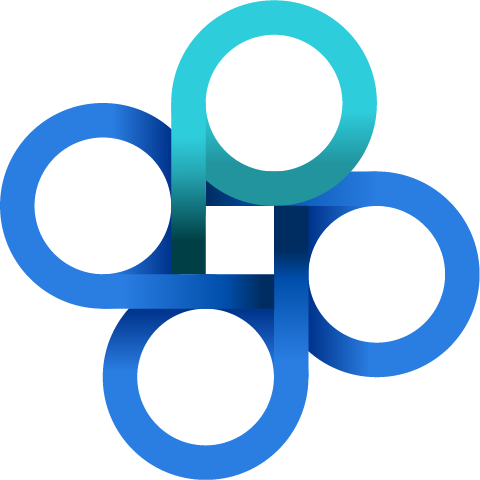Are Brands Prepared to Maintain Success Amid a New Wave of Online, Call Center Activity?
Due to travel bans, a spike in remote workers, temporary business closures and event cancellations, consumers across the U.S. will be spending a significant portion of their mornings, afternoons and evenings at home over at least the next few weeks. It’s something that will put the internet’s infrastructure to the test (some regions have already seen a 30% spike in activity).
It’s not just the internet that will see a sharp increase in activity, though. Direct to consumer companies, online brands, call centers, customer support agents, and online forms will deal with a lift in inbound activity as foot traffic diminishes and indoor time rises.
And while internet bandwidth is in question, brands, marketers, lead generators and more will also face a traffic increase of their own and might be asking themselves “How can we be sure we’re prepared for this?”
Whatever level the new volume hits, an increase in traffic will be a good thing for brands. And marketers in any industry should be prepared to react in real-time to the stream of online shoppers, callers and inbound leads at any moment. Fortunately, there are ways to maintain and amplify success when activity spikes. Brands can instantly ensure that they know everything they can about each consumer, no matter which channel they come through, and prioritize inquiries to focus on high-propensity buyers to maximize efficiency and conversions.
Here are recommendations on best practices that marketers can leverage to understand, reach and convert as many consumers as possible during this time of increased online and call traffic.
Know Who Your Consumers Are
The amount of consumers taking their business online and contacting call centers in the coming weeks will likely be unprecedented. According to eMarketer, about 75% of internet users could begin to avoid physical stores (at least temporarily), leading to an increase in online shopping. It’s more crucial than ever that brands understand each individual’s unique identity and buying journey.
By failing to recognize a consumer and their current lifestyles and needs, brands are risking a poor customer experience and might miss opportunities to convert, and enhance and expand relationships with their consumers.
How brands succeed: Whether it’s a first contact or a longtime customer, the most successful marketers make sure they’re able to identify each consumer to meet any need and provide the most relevant products and services at the right time. Implementing rich consumer data and attributes (such as age, marital status, income), as well as predictive intelligence and lifestyle indicators gives any brand key insights to drive the best offers at the moment of engagement and create experiences that will keep customers coming back.
The bottom line: More consumers will be engaging with your brand online than ever. Prove that you know them and understand their needs by making the right offers at the right time.
Reach Consumers Across Devices
The average U.S. adult uses multiple connected devices each day. Total interactions with those devices figures to climb even higher—at least in the near term—as consumers spend more time at home.
For digital marketers, more touches on more devices means more opportunities to reach consumers. However, in order to make the most of each opportunity, marketers must find a way to create a seamless experience with compelling, relevant messaging from device-to-device across more channels.
How brands succeed: While non-PII digital identity markers such as Mobile Ad IDs (MAIDs) tied to hashed email addresses have emerged, allowing consumers to remain anonymous, marketers still are able to provide a consistent brand experience.
Through cross-device linking, all mobile devices associated with an individual or household can be identified and connected, without identifying the consumer using them. This has empowered digital marketers to provide a single, consistent omnichannel message to the same consumer across all of their mobile devices. Linking each device also ensures minimal ad duplication to maximize efficiencies and enables retargeting efforts from one device to another.
The bottom line: The number of interactions across multiple connected mobile devices used by consumers is climbing and will reach new heights in the near-term. By leveraging cross-device linking, you’ll create a seamless experience no matter which device they’re using to reach your brand.
Reduce Friction, Increase Conversions
For financial services and mortgage marketers in particular, there are factors beyond an increase in inbound traffic from consumers spending more time at home that is creating a new wave of inbound inquiries. Record-low interest rates have led to a high volume of refinance leads for marketers. However, while low rates are beneficial for the industry, the sudden increase in consumer traffic leaves mortgage marketers with the challenge of prioritizing which leads are best among the deepened pool. And those who can efficiently sort and prioritize will be in the best position to make the first offer to the best leads.
In order to maximize efficiency, mortgage marketers—as well as brands that are dealing with more online and call center traffic–must optimize engagement and create a smooth experience by understanding inbound consumers’ specific needs and potential value.
How brands succeed: Marketers who instantly score and profile inbound leads are able to weed out less-likely-to-buy prospects, improving the efficiency of their marketing and sales teams while boosting ROI, and reducing costs and manual work. By properly identifying consumers and their propensity to convert, they’re able to route leads to the right agent or salesperson to meet their needs and tailor personalized offers that increase conversion rates.
Successful marketers are also focused on reducing friction as much as possible for inbound leads—especially in times of higher volume. Conventional wisdom might say brands that require more fields in an online form will know their consumers better. However, requiring too much information or asking questions that consumers don’t want to answer can backfire and increase abandonment.
The answer to “How many fields is too many?” isn’t an exact science, but marketers who succeed in reducing friction understand that less is almost always more. By completing identities with fewer required form fields (simply a name, email or phone number, for example), marketers and lead generators make the process quicker and painless, reducing abandonment and maximizing leads. Demographic and psychographic attributes can even be added to complete consumer profiles in real-time.
The bottom line: Reducing friction, completing identities, and prioritizing the best prospects is essential in maximizing the value of your leads—especially in times of increased traffic.
Successful Brands are Prepared for Anything
Marketers in any industry should strive to know who their best customers are at any moment. In uncertain times with fluctuating demand, it’s more important than ever to double-down on real-time consumer knowledge as consumers raise their hands to buy, in order to prioritize high-propensity buyers and personalize offers to make the most of each inquiry.









 Your Privacy Choices for Platform Services | Data Services
Your Privacy Choices for Platform Services | Data Services